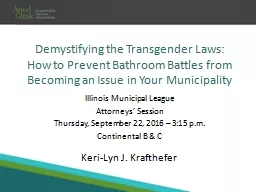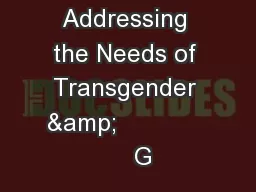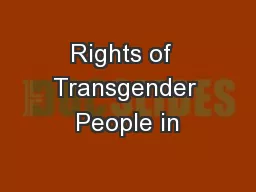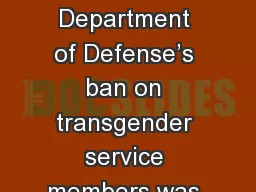PPT-Demystifying the Transgender Laws: How to Prevent Bathroom Battles from Becoming an Issue
Author : tawny-fly | Published Date : 2018-10-28
Illinois Municipal League Attorneys Session Thursday September 22 2016 315 pm Continental B amp C KeriLyn J Krafthefer What are we talking about anyway Transgender
Presentation Embed Code
Download Presentation
Download Presentation The PPT/PDF document "Demystifying the Transgender Laws: How ..." is the property of its rightful owner. Permission is granted to download and print the materials on this website for personal, non-commercial use only, and to display it on your personal computer provided you do not modify the materials and that you retain all copyright notices contained in the materials. By downloading content from our website, you accept the terms of this agreement.
Demystifying the Transgender Laws: How to Prevent Bathroom Battles from Becoming an Issue: Transcript
Download Rules Of Document
"Demystifying the Transgender Laws: How to Prevent Bathroom Battles from Becoming an Issue"The content belongs to its owner. You may download and print it for personal use, without modification, and keep all copyright notices. By downloading, you agree to these terms.
Related Documents














